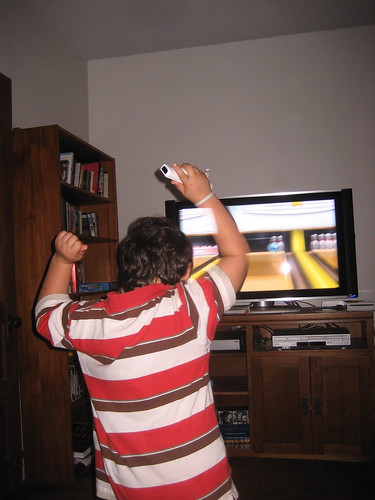
not the esports training center in the article
The Washington Post has an article about how esports franchises are starting to build training facilities for teams that offers some surprisingly useful lessons about work-life balance.
For those who aren’t familiar with it, esports is becoming a big thing in the gaming world, and in sports more generally. It took off as a professional, corporate activity in Korea in the early 2000s, and recently has expanded to the U.S. (In fact, some teams playing in the U.S. are from Korea [insert bad immigrants taking our jobs joke here]). If you’r not familiar with it, this video provides a good introduction to the business:
[embedyt] https://www.youtube.com/watch?v=VLrAvfidPYo[/embedyt]
For a long time, many companies would set up “team houses in which players both work and reside,” but as aXiomatic Gaming CEO Bruce Stein explains,
When we formed the idea of a training center, it got [the players] out of training and living in the same environment…. We felt that was a little stifling. It didn’t give them a separation between relaxation and work. And it wasn’t the ideal setup for training with the coaches and the analysts. So, we built a facility.
Given that aXiomatic Gaming’s owners include owners or partners in two basketball teams, two baseball team, and two hockey teams, it’s not a surprise that they wanted to.

not really an esports training center
The center is like any other professional sports facility: there are playing fields, a film room for reviewing games, and a kitchen and chef.
What do the players think?
“I think this facility is insane…. Six years ago I was scrimming [practicing] out of like this tiny dinky house in Diamond Bar [in Eastern Los Angeles County], the cheapest possible place you could fit five people.
The coaches like it too.
Overall it fosters a more structured and work-focused environment compared to esports houses.
“Players would just wake up at 10:28 for a 10:30 morning and just crawl out of their beds to it,” assistant coach Jun “Dodo” Kang said, speaking about how it was in the gaming house.
Coach Nu-ri “Cain” Jang said, via translation, that, “Having living and working space in the same place makes it too relaxed for the players. . . . Separating that just helps players focus on being professionals. Like, you’re waking up and actually going to work.”
Kim “Olleh” Joo-sung, one of the Korean players, said the facility helps him stay more balanced.
We hear a lot about the benefits of being able to “blend” work and life, or professional and personal stuff, but there’s a big literature on the psychological and productivity benefits of work-life separation— of having really clear boundaries between work time and your work self, on one hand, and your personal life on the other.
For one thing, having time off is simply psychologically good for you. It gives you time to recover the mental and physical energy you spend at work. This is especially true for people who are in highly stressful jobs, or jobs that explode them to unpredictable, chaotic situations– ER nurses, doctors, and law enforcement are the obvious examples, but people who work in badly-managed offices can also benefit more from clear boundaries. Studies have found that people on zero-hour contracts, who can be ordered into the office on short notice, or are on call, have more trouble detaching from work, and their performance suffers over the long run. Having a physical distinction between work and home– like a training facility rather than a gamer house– goes a long way to enforcing those boundaries.
Predictable breaks and good boundaries between work and home life are good for short-term recovery, and for good long-term career development. There’s a reason people who discover what I call “deep play,” serious hobbies that are as engaging as their work, have more distinguished and longer careers than people who don’t: deep play gives them a degree of balance and control in their lives that they wouldn’t have otherwise. And people who are really ambitious, or get very involved in their work, need the benefits of breaks, and the structure of having them enforced by physical distance and time, even more than average workers. Your highest performers are also the ones most likely to burn out– and really cost your company– if you don’t get them out of the office on a regular basis.
Strong work-life boundaries also make it easier to enforce professional norms and get good performance. Like many people, I like the fact that work allows me to behave differently than I do in my private life; and that’s easier to maintain if those lives are actually separate. I know lots of employers like to talk about “bringing your best self to work,” but that assumes that your “best self” is the same whether you’re in the living room or the courtroom or operating room. One of the reason we find work and hobbies meaningful and rewarding is that those activities let us cultivate different best selves, or exercise parts of our selves in one context that we can’t in another.
The example of gamers moving to a training facility model is significant because these guys are the perfect workers of neoliberal corporate capitalism. They’re young men, unmarried, without families or even house plants. They have no lives, and it’s not clear that they really want them. They live and breathe their work. Most corporate sponsors (or employers) assume that to get the most of these people, you want to encourage those habits, and make it possible for work to overrun life.
But raw passion doesn’t make for world-class performance, and mere obsession can be beat by super-focused work. Combining great training and workplace with stronger work-life boundaries lets people work more intensively, at a higher level of performance– and that’s really what you want. You want them going home, so they can beat the guys who are sleeping under their desks.